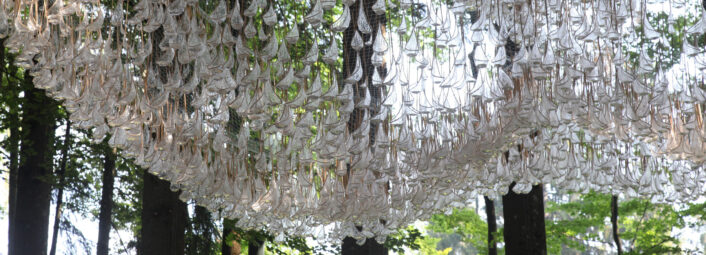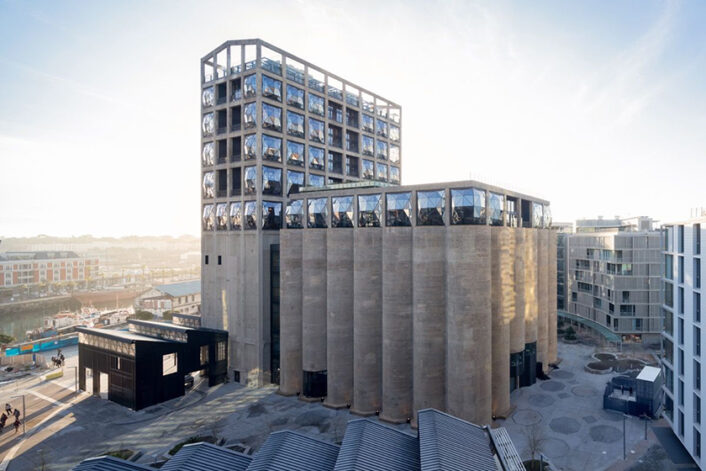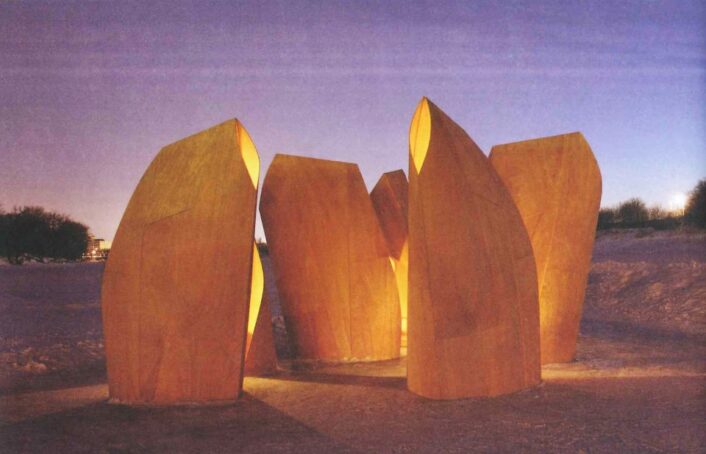Fine Art
Carolina Caycedo’s nets
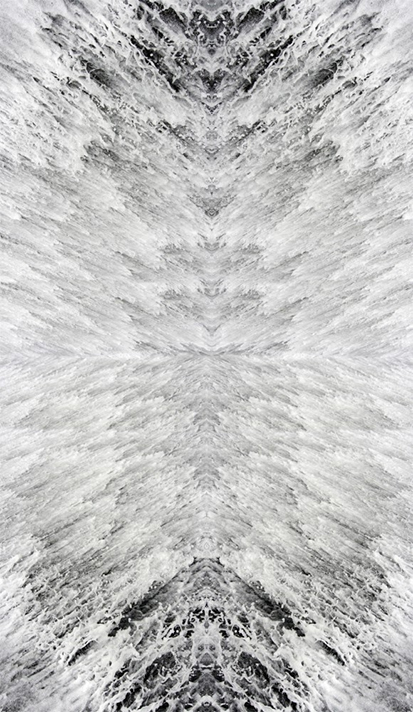
“Simulacro/ Simulacrum”, 2015. Photograph printed on fabric. Part of the “Water Portraits Series”, 2015-2016.
Dimensions are: 700 cm. x 150 cm.
Image courtesy of: Carolina Caycedo
The artist behind a series of haunting installations hopes that giving water a multidimensional presence will reorient this generation’s relationship to the natural world and the earth’s essential water supply. Carolina Caycedo believes that by presenting rivers and streams upright and by showing waterfalls as flowing backwards and sideways, water is represented as “equal” to humans. Essentially, Caycedo believes that through changing the orientation of the landscape, humans are not necessarily in a superior position.
Caycedo says, “It’s not just a mineral, or a ‘renewable resource,’ as some people still call water; it’s actually a political agent, a living entity with a soul, with a cobra grande.” She invokes the communities that live along the Amazon’s Xingu River who believe the river’s path has followed the serpentine traces left by the great snake.
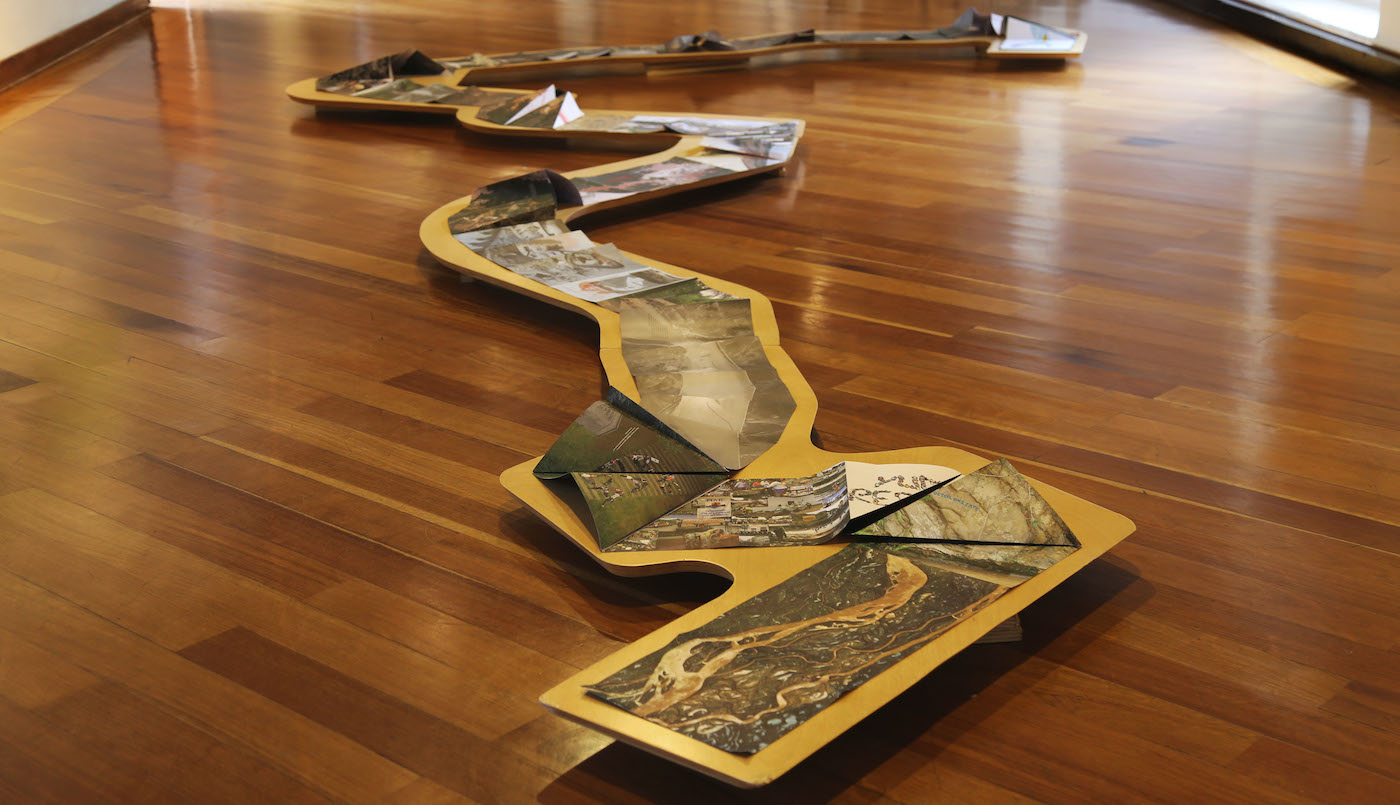
“Serpent River Book'”, 2017. Fold-out book, 72 pages. Commissioned by LACMA for “A Universal History of Infamy” in collaboration with Creative Capital and the Art Museum of the National University of Colombia. Numbered edition of 250.
Dimensions are: 22 cm. x 31 cm. x 3.5 cm. (closed)
The Serpent River book combines archival images, maps, poems, lyrics, satellite photos, and Caycedo’s own images and texts on river bio-cultural diversity.
Image courtesy of: C & America Latina, photographed by: Ana Luisa González.
Caycedo was born in London to Colombian parents. She spent her earliest years in England, but soon moved back to Bogota. When she neared her teenage years, Caycedo’s family relocated to a small farming town called Girardot. On the banks of the Magdalena River, the patriarch started growing basil. After living in two capital cities, this was not an easy move for Caycedo; however, the move gave her early exposure to the seasonal cycles of life on a river: the rise and fall of the water and the seasonal plantings. Furthermore, family trips to more remote tributaries helped secure Caycedo’s understanding of the environment; and especially of water.
Following graduation, Caycedo moved to London where she worked as a guard at the Tate Gallery and then, she moved to Puerto Rico for seven years. The artist has been in Los Angeles since 2009, where she completed a master’s degree in Fine Arts from USC. Always interested in the politics of the public sphere, it was only natural that water would become the topic Caycedo felt most passionately about. Lucky for us, it is the subject most often represented in her work.
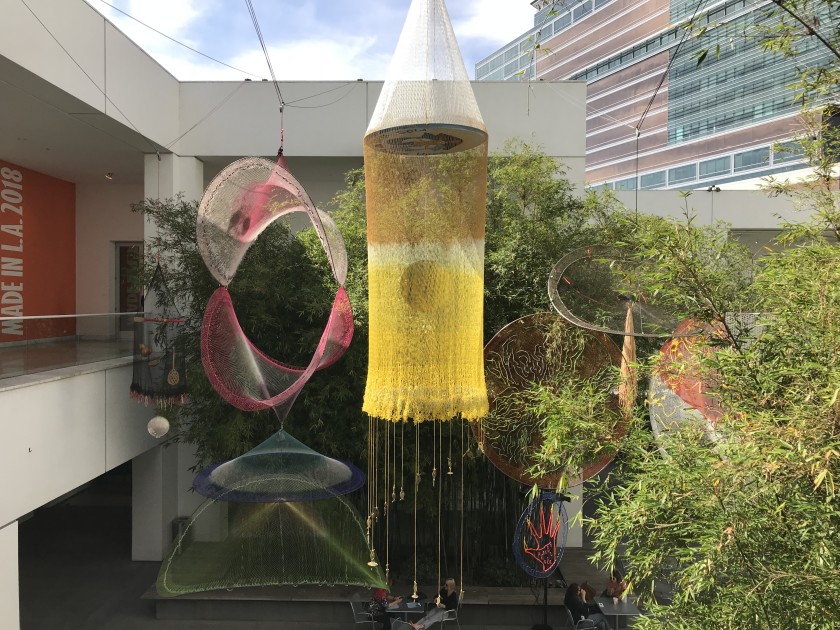
“Cosmotorrayas”, 2018.
Exhibition at the Hammer Museum, Los Angeles. Part of a “Made in L.A.” exhibition and “Cosmotorrayas” is part of Caycedo’s ongoing project, “BE DAMNED.”
Image courtesy of: Los Angeles Times, photographed by: Carolina A. Miranda
Caycedo calls her hanging sculptures “cosomnets”. Through these works, she hopes to suggest everyone taking a more conscious and softer approach to the planet’s natural resources. Cosomnets are made from fishing nets that she sources from Latin American riverside communities. Once she has the nets, she takes them to her studio to sculpt and embroider. The end result resembles a dream-catcher and within the weaves are personal narratives about their makers.
Caycedo says, “The net was fascinating to me from the beginning. The technology of it. The big wooden needles (which are used in fishing communities around the world to make the nets). When it breaks, it doesn’t compromise the functioning of the whole net, it can get repaired. I started to think: How good would it be if or society started to function more as a fishing net instead of the wall of a dam?”
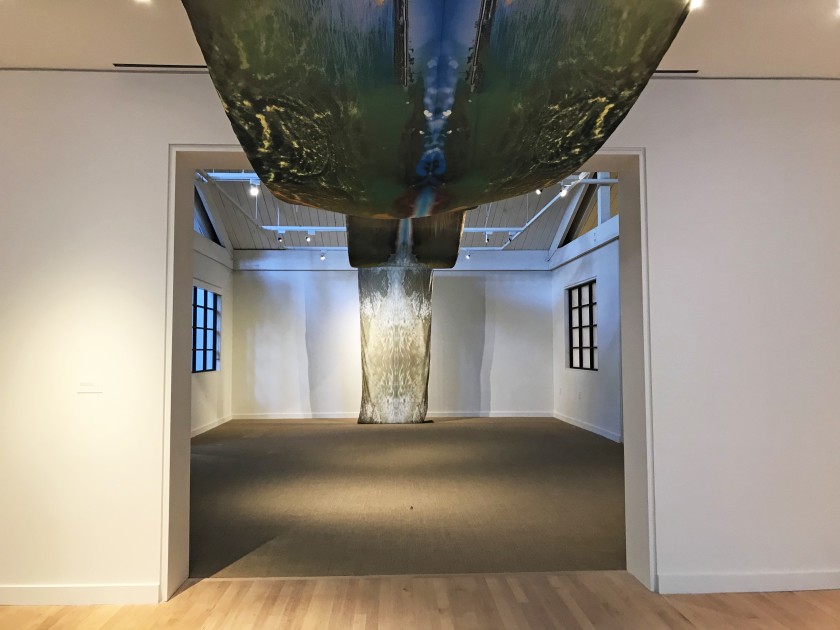
“BE DAMNED” is Caycedo’s most fascinating exhibition. We don’t think about hydroelectric dams often, even as they have proliferated across the world in alarming speed during the past two decades. These dams often cause lasting damage to local ecosystems and communities. Through her exhibition, Caycedo shows the environmental and social impact of harnessing rivers to generate power.
Caycedo says, “The dam is corporate-made, impenetrable, unmovable. It cuts the body of the river in two. It cuts the flow of the ecosystem. On the other side you have the fishing net, which is man-made, small-scale, porous, flexible, malleable. It lets the water through but catches the sustenance.” Via her work, the artist hopes to appeal to the world for the establishment of legal protection for the rights of nature.
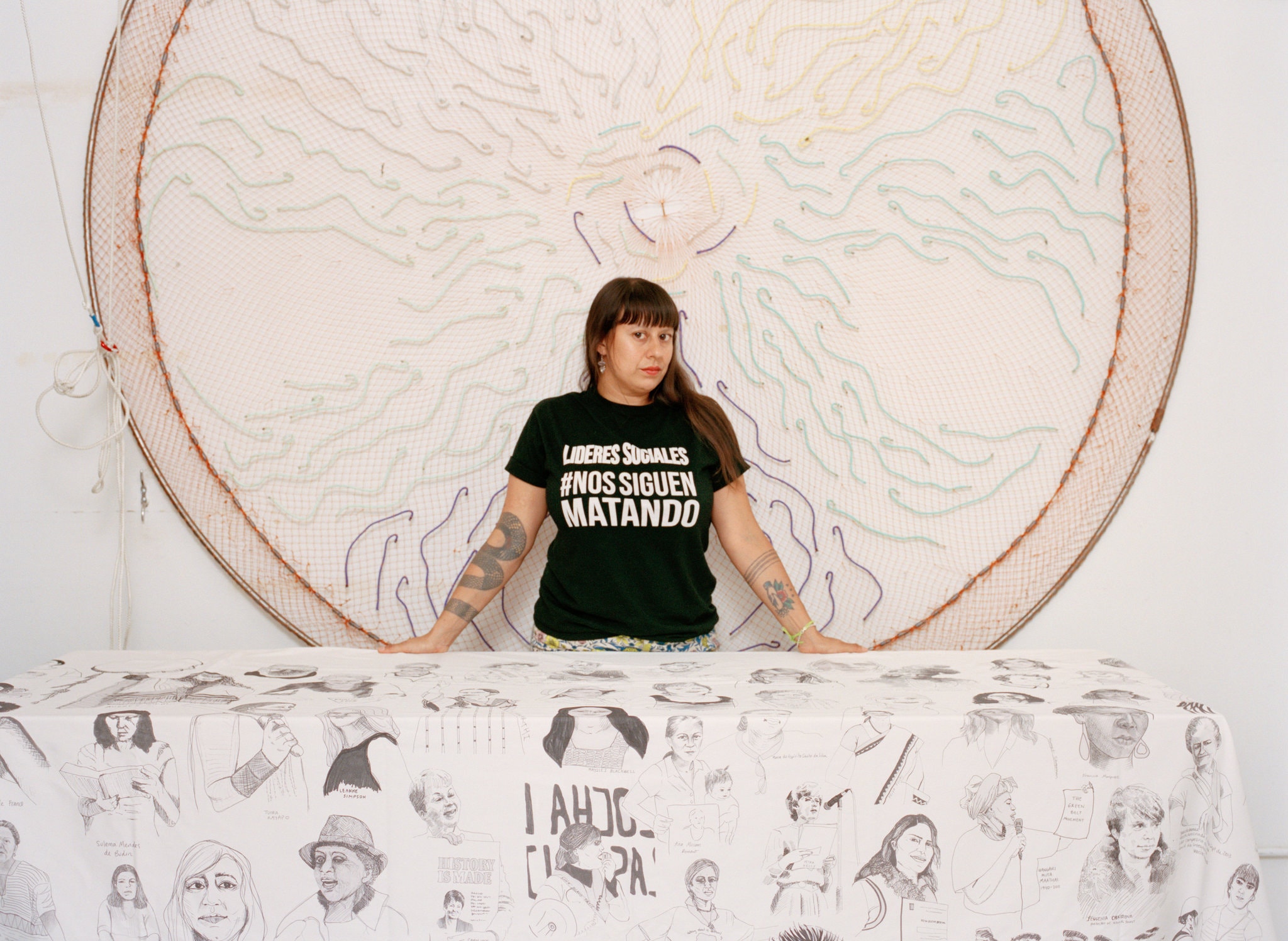
Caycedo in her studio standing in front of “Currents.” “My Feminine Lineage of Environmental Stuggle” is on the table.
Image courtesy of: The New York Times, photographed by: Keith Oshiro
It is not a stretch to see that Caycedo’s works are making a difference. In Latin America where the continent is one of the world’s centers of dam-building, the region has become an environmental progressive. Both Ecuador and Bolivia have added the rights of nature into their respective constitutions. And in Colombia, the 2016 peace agreement with FARC declared nature as a “victim of the guerrilla war.”
We conclude with a quote by Caycedo, “We believe that nature has also been a victim and a prize, a booty of the war. Like any other victim of the war, it needs reparations.” We agree, 100%!
